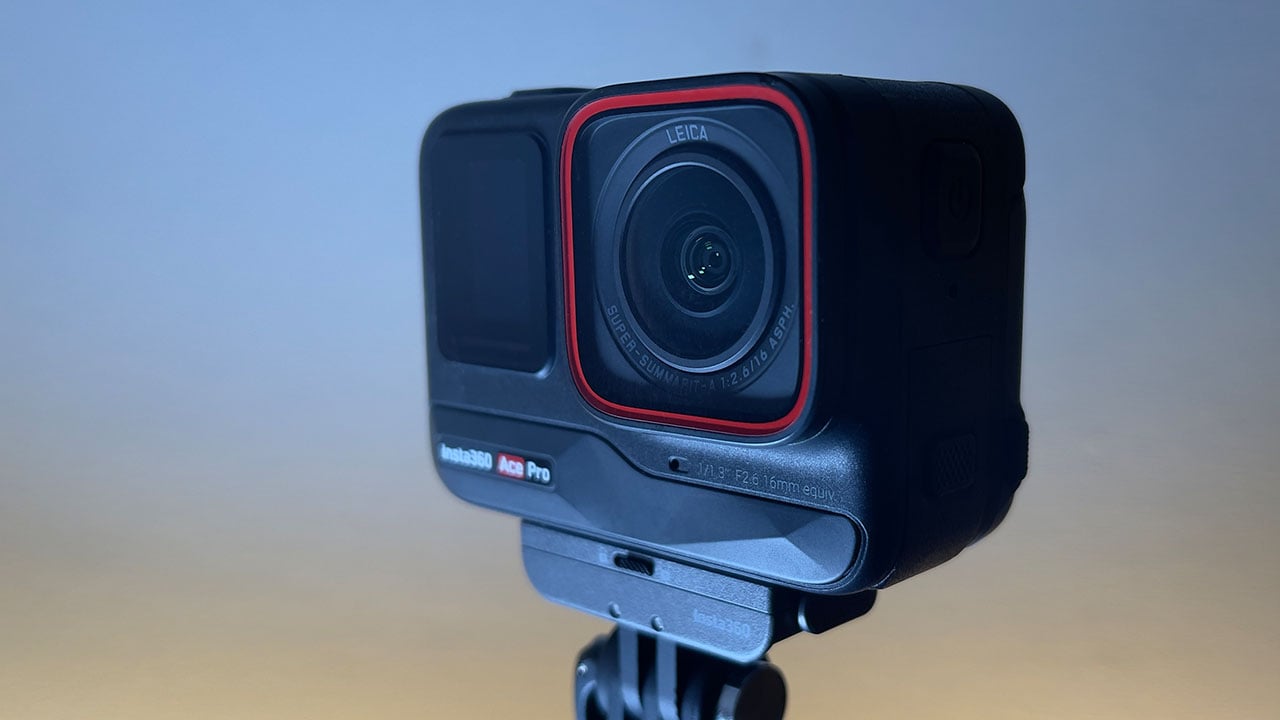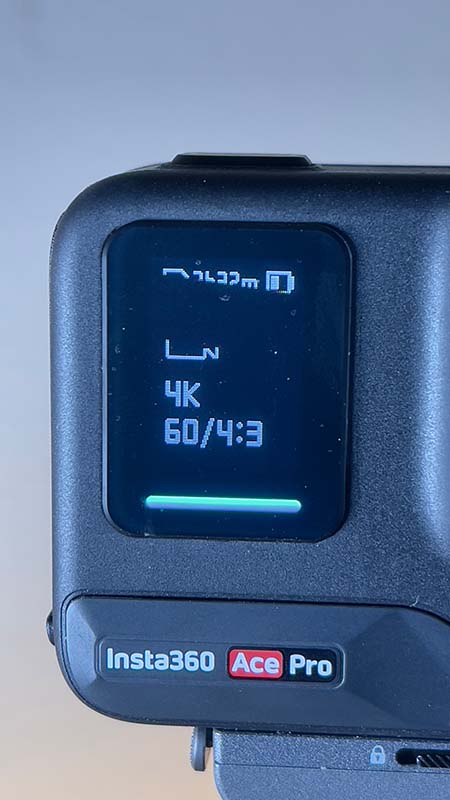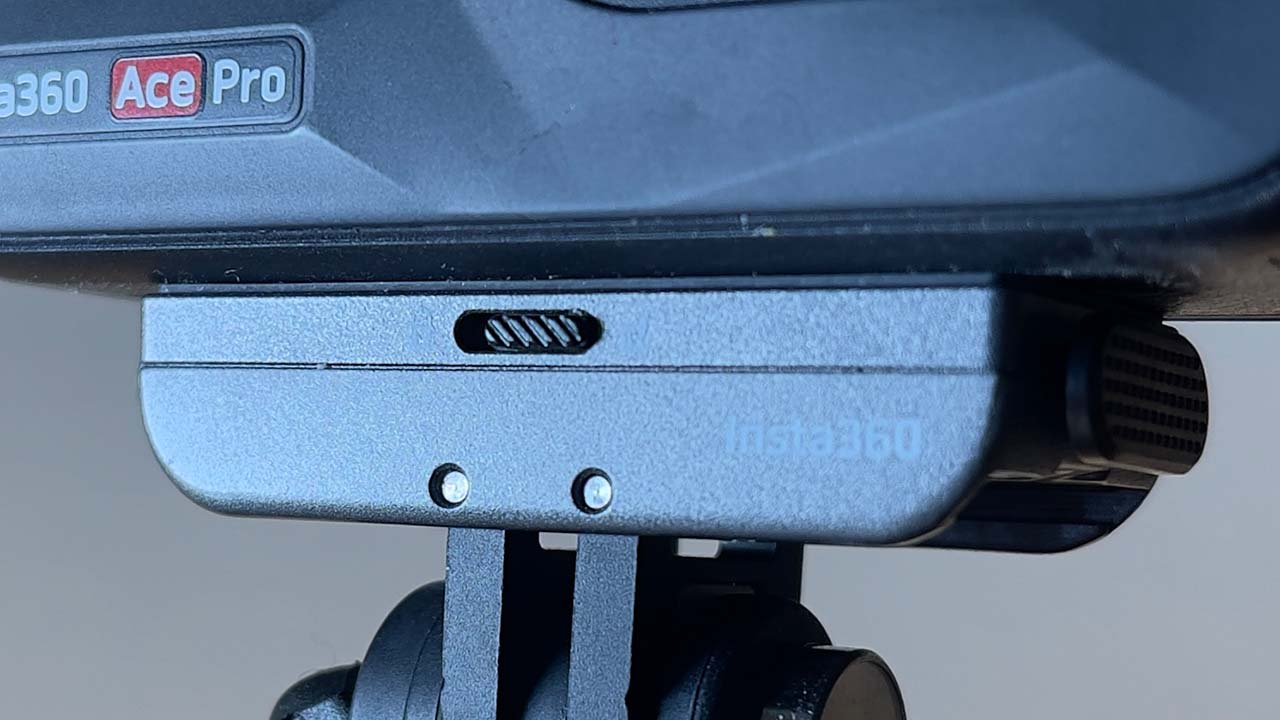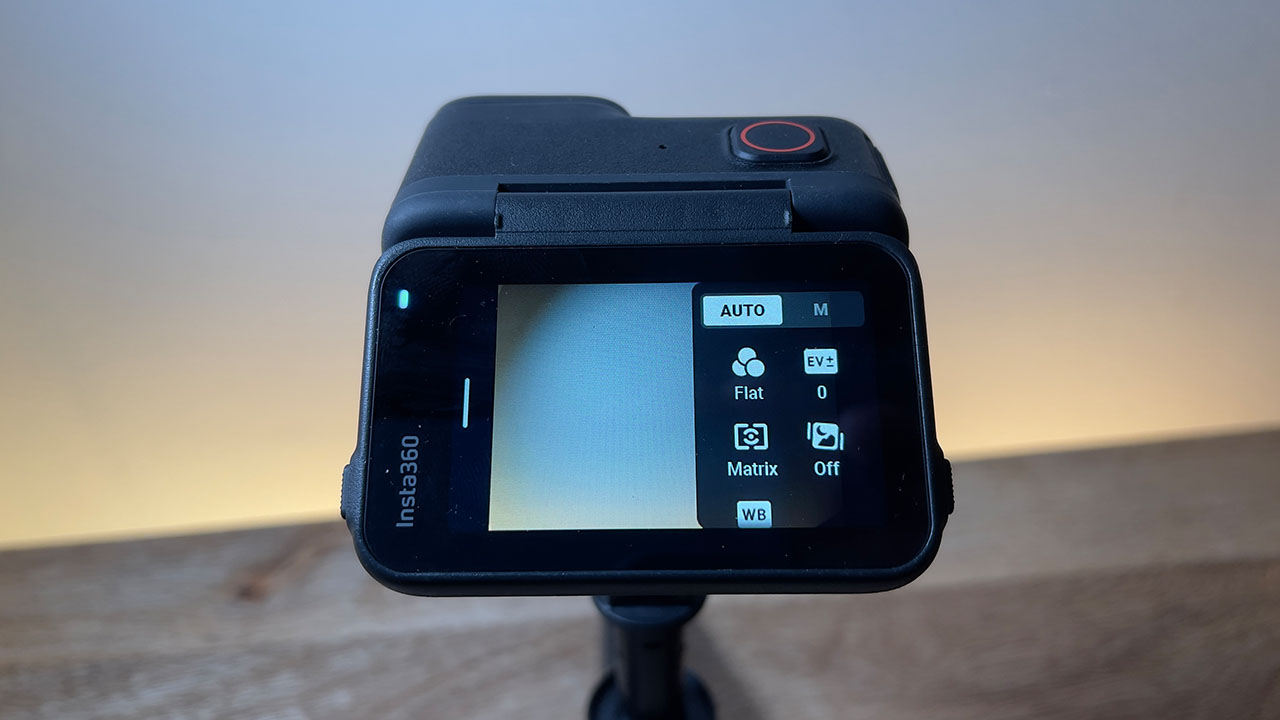
Simon Wyndham takes a text and video look at the flagship model of Insta360's two latest action cameras, the $449 Insta360 Ace Pro.
One of the hottest markets at the moment is with action cameras. Just when you think you've seen everything, a new one comes along to add to the competition. This time, it's the new Insta360 Ace Pro.
Insta360 is no stranger to the action camera market, but the Ace Pro marks a departure from the company's previous fare because it's the first time it has released an all-in-one GoPro-style camera. Previously, we've seen the ONE R and ONE RS, which were modular in design, and, of course, the GO series cameras, which were aimed more at the general lifestyle market rather than out-and-out action sports use.
With the action camera market being so populated right now, manufacturers are having to find unique ways to differentiate themselves from the competition. GoPro has its 5.3K 8x7 sensor and additions such as the Max Lens Mod 2.0, while DJI went for absolute reliability under the harshest of conditions and battery life. So, what does the Ace Pro bring to the mix?

The Ace Pro features a very clear front display with an enormous tally light (note that the display 'tear' in the image above is due to refresh rate and the shutter speed the image was taken at)
Ace Pro external features and design
The Ace Pro immediately creates an impression as soon as it comes out of the box. The build quality feels excellent, and it's full of neat aesthetic design touches, such as the red surround on the lens protector. The main control buttons are nice and large, and the front-facing display has the clearest display of settings information I've yet seen on an action camera. There is also an absolutely massive red tally light, so it's super clear when the camera is recording, even if you mount it a distance away from you.
The 2.4" rear touchscreen display flips up so that selfies can be taken, and again, this is very clear and bright. The lens has been designed by Leica, and features a 16mm equivalent FOV, which is a little narrower than rivals such as the Osmo Action 4 and GoPro HERO12.
Insta360 debuted a magnetic clip mount system with the GO3, which I found had some flaws in terms of secure mounting. The company went back to the drawing board and came up with a brand new system for the Ace Pro, and it appears to be a huge improvement. I was supplied with two different mount types. One is designed for high-impact action scenarios and features a very tight mounting, so you really need to press hard to get the camera to clip in. The second is designed for more sedate situations and is faster to clip in and out of, but even this mount features a locking switch to prevent accidental dismounting, so I would still trust it in most general action scenarios.

The new magnetic mount design is rock solid
Internal specification
Sensor-wise, the Ace Pro features a 1/1.3" imaging device, which is in keeping with competitors such as the DJI Osmo Action 4. Although, unlike the Action 4, the Ace Pro's sensor is a 48MP affair and, as such, has a smaller effective pixel pitch. But if you're expecting poor low-light performance, then this doesn't really tell the whole story. You see, the Ace Pro also packs an incredibly fast processor, which has been manufactured using a 5nm process. Insta360 calls it an "AI chip" due to the advanced computations that it has been created to carry out, not least of which is some very nifty noise reduction. More on that in a bit.
With regard to functionality, the Ace Pro keeps pace with the competition, with 10m waterproofing and being rated to operate in temperatures down to -20c. There's also a cache record function so that you can capture either 15 or 30 seconds of footage prior to the record button being pressed. You can also schedule capture as well, for example if you wanted to capture a sunrise timelapse but didn't actually want to get out of bed to start the camera. The camera can also be fast-charged to 80% capacity within 22 minutes, an important ability that still eludes the GoPro.
So, the Ace Pro is well specced and featured, but let's get down to the nitty gritty. What's it like to use, and what kind of results can you expect from it?
Practical use
For starters, the Ace Pro powers up and starts recording very quickly, no doubt helped by that quick processor. The interface is very easy to use, and is possibly the most responsive I have used on any action camera. The experience is much more akin to a smartphone, with gestures giving an instantaneous response.
The 2.4" flip-up screen is bright and sharp. It appears to be very solidly built and has a few practical purposes. Its main use when flipped up will be to frame selfies. But it can also be used in different positions to help get framing in award positions, such as ground-level positioning.
Video filming can take place in the standard video mode, which bakes in stabilization, or via the FreeFrame mode, which requires post-processing within the Insta360 software to apply stabilization. The latter doesn't quite give as much freedom as the GO 3, due to the Ace Pro's much narrower FOV, so my recommendation is to use the standard video mode this time around.
When the record button is pressed, the Ace Pro gives off a vibration, which is useful when the camera is mounted to a helmet. It means that you know instantly that the camera has started recording rather than having to listen out for an audible sound, which often gets drowned out in the environment. My only caveat is that I would like to see a double vibration to indicate when the camera has stopped recording. At one point in my testing I got into that old situation where I stopped recording while thinking I was starting it.
Interestingly, the Ace Pro allows you to pause recording and then continue again, effectively allowing you to edit in-camera, creating a single clip instead of many smaller ones. If you use the quick capture mode, whereby pressing the record button powers the camera on to start recording, and then pressing it again to stop and power down, the Ace Pro gives a countdown before powering off. This gives a window of opportunity to continue recording should something interesting present itself suddenly.

The Ace Pro's flippable LCD display is bright, and the user interface is extremely responsive
A neat feature of the Ace Pro is the 2x digital zoom. This crops in on 8K of resolution, giving you a lossless 4K zoomed image. The quality of it is exceptionally good, and gives the Ace Pro a truly useful tool for grabbing varied footage on an adventure trip. What's more, the 2x zoom can be used in the middle of recording as well, so you don't need to stop and then start again like you would with other action cameras.
From a practical action camera viewpoint, there are three main areas in which the Ace Pro doesn't quite equal the competition. The first is the angle of view that's available. At its widest "Action" setting, the Ace Pro is not too far off a GoPro using Superview, which is okay, but not spectacularly wide. You can gain some extra depth by putting the camera into 4:3 mode and then performing a lens dewarp in your NLE, but it's just not on par with the DJI Osmo Action 4 in Ultra-Wide mode, or the HERO12 in either standard Hyperview or the exceptionally wide Max HyperView using the Max Lens Mode 2.0.
The second drawback is that there's no 10-bit color mode. Insta360 says that it isn't chasing the pro user market, so this wasn't a priority for the camera. But still, it would be a nice feature to see, given the Ace Pro's obvious strengths elsewhere.
The third is the camera's size and weight. It's noticeably bulkier than the HERO12, although comparable in feel on a helmet when the HERO12 has the Max Lens Mod attached.
With that said, the Ace Pro does have exceptional battery performance and is very fast to charge. For watersports, although Insta360 hasn't said if there's a hydrophobic coating on the lens protector, I found that water droplets didn't seem to form on it very easily, and so I have a hunch that it may well have one, despite no mention of it in the marketing.
Image quality
As with all action cameras, I recommend turning the sharpness setting on the Ace Pro to Low. Once this is done, the image from it is very pleasing, with a high degree of detail yet a smooth look. When the camera is set to frame rates of 30p or lower, it switches to an HDR mode. There's no control over this. However, I can say that it looks very natural for the most part and gives the image noticeably more dynamic range in difficult lighting conditions than its rivals. Exposure of people is helped by way of the facial exposure setting, which leverages the power of the processor to track faces and expose them properly.
PureVideo mode, which has been designed for low-light operation, works absolutely brilliantly. The Ace Pro is most certainly the best-performing action camera in low light that I have come across as, apparently, the 5nm chip is able to perform noise reduction on a frame-by-frame basis before video encoding. The result is a low-light image that still packs detail without the 'watercolor' effect that plagues most other cameras when heavy noise reduction is applied. Stabilization also works well in such situations, thanks to the low light stabilization mode, so ghosting effects are kept to a minimum.
For people who want to overlay GPS data, the Ace Pro integrates with your phone or Garmin watch to obtain movement and location data that can be used to create overlays later.
Now, there are lots of post-production features that have been introduced into the Insta360 mobile app, such as the AI warp function amongst others, that give an impressive effect by almost turning your footage into something akin to a Manga animation. Impressive though such effects are, they are a novelty and not something I can see myself using much other than as an experiment or a bit of fun.
Insta360 Ace Pro conclusions
Insta360 has most certainly created a very impressive action camera. The $449 Ace Pro produces some impressive imagery, as well as providing reliability, an ultra-snappy touchscreen interface, exceptional battery life, and a fantastic mounting system.
My only niggle is the FOV available, which for first-person shots falls short of the competition. If the next iteration of the Ace Pro can push Leica to develop a lens to match or even exceed the angle of view of DJI's Ultra-Wide mode or HyperView, as well as adding in 10-bit color and a log mode, then the Ace Pro would quite possibly be the perfect action camera. It boggles the mind to think what an action camera with a true ultra-wide lens similar to a Laowa Zero-D model would be like!
As it is, it's the Ace Pro is an exceptionally good camera, and if having the widest angle of view isn't your priority, then it comes highly recommended from me. Watch the video review below.


Comments